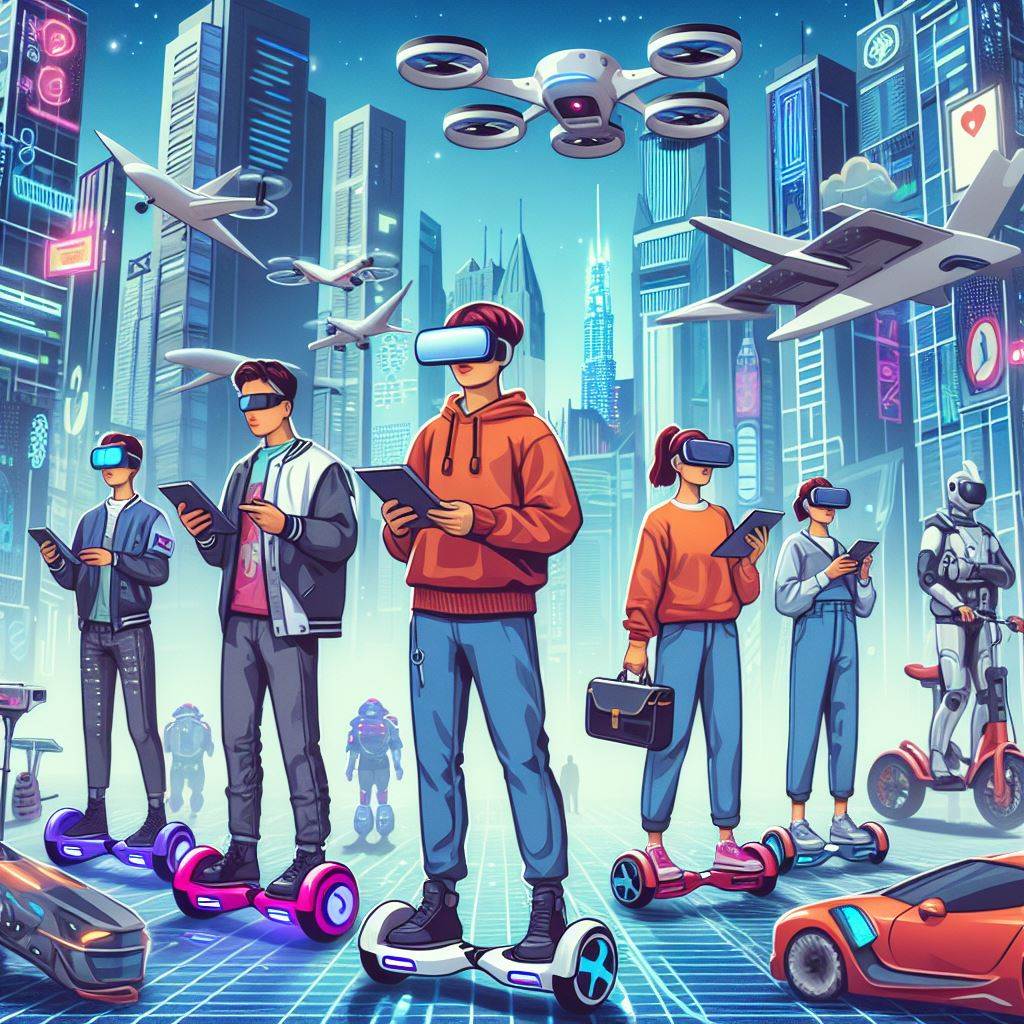Generative AI, semiconductors, quantum computing, batteries, and space technologies are some of the technology trends that will dominate in 2024—starting with generative AI, which between 2022 and 2023 conquered the scene in the global public and entrepreneurial debate, fueling the belief that technology is capable of catalyzing progress in the economy and society. While it will continue to be a hot topic next year, other key technologies are also expected to reach a maturity or breakthrough stage in 2024 to help solve the most pressing challenges facing business, society, and the environment.
The GenAI
While generative AI has demonstrated its potential in recent months, the spread of general-purpose models and their large-scale adoption has also underlined the limits of the technology. The most significant one, for companies, refers to the so-called “hallucination” phenomenon, a term used to indicate the answers provided by these models that are not inherent to the input given by the user and that misreport the facts and data. While this limitation highlights the need for more reliable models, the size of such general-purpose models also limits the costs needed to develop and train them. In 2024, we estimate that the need for smaller, more cost-efficient models will grow.
Technology trends 2024
These models will become minor and run on small-footprint installations with limited computing capabilities, including at the edge of networks (edge devices) or smaller enterprise architectures. The problem of hallucinations will also be addressed, combining generative AI models with high-quality information from Knowledge Graphs (structured representation of data and their interconnections). To support these transformations, platforms will be created to provide companies with tools to exploit generative AI without needing deep internal technical skills. This will lead, in the long term, to the creation of interconnected networks of models designed and tuned for specific tasks, as well as to the development of genuinely multi-agent generative ecosystems. These developments indicate an evolution towards a more accessible, versatile, and economical technology. These innovations will enable organizations to use generative AI cases to scale more quickly and derive greater long-term value from this technology.
The quantum technology
The second trend concerns Quantum Computing, a technology that has reached a turning point. The maturity reached by the technology poses severe risks to companies on the IT front: in a scenario characterized by a growing number of attacks and threats, the development of quantum computing could make current encryption standards such as RSA and ECC obsolete. The development of quantum-resistant algorithms is therefore becoming a pressing necessity to maintain data privacy and security in the future. In the United States, the standard for “post-quantum cryptography” (PQC), i.e. encryption algorithms deemed resistant to quantum attacks, will be published 2024 by the National Institute of Standards and Technology.
Since the Quantum Computing Cybersecurity Preparedness Act requires that public and private organizations that supply the US government be ready to migrate to PQC within one year of NIST standards publication, this topic will become a topic of conversation for boards of directors in 2024. This is an emerging change that promises to shake the very foundations of cybersecurity standards globally. All business leaders and technology experts will be affected by this breakthrough as more and more organizations begin their quantum transition.

Moore’s law is transforming
As the world’s most traded commodity (ahead of crude oil and motor vehicles), semiconductors are crucial to digital transformation. Moore’s law states that the computing power of a microchip doubles every two years while its cost halves – a theory that perhaps reaches its physical and economic limits. The semiconductor industry is indeed on the brink of an era of transformation, with multiple factors converging to redefine its landscape in 2024. Chips are reaching 2 nm; transistors are approaching the size of a few atoms, and growing investments in research and development and state-of-the-art manufacturing facilities are becoming a challenge for even the most prominent manufacturers. 2024 should see an evolution of Moore’s law with new paradigms.
Despite approaching the absolute physical limit of chip miniaturization, chipsets could see advances in 3D chip stacking, innovations in materials science and new shapes of lithography to continue increasing computing power. These technological advances will be reflected in changes in the semiconductor ecosystem itself, with the emergence in 2024 of new giga factories – currently, around 60 projects are being implemented globally –new regulations, new business models and new services fusion.
Batteries still powering the worlds
Improving the performance and reducing costs of batteries is an important goal for both companies and governments, as the industrial stakes are high for every nation. The objective is to support electric mobility and accelerate long-term energy storage, which is fundamental for speeding up the energy transition towards renewable energy and accelerating the birth of smart grids. While LFP (lithium iron phosphate) and NMC (nickel manganese cobalt) batteries are becoming the standard for electric vehicle applications, several critical issues are emerging that are pushing the market towards the search for alternatives. Firstly, the materials that make up these batteries (such as lithium, nickel, and cobalt), already difficult to find in some countries, are becoming increasingly difficult to find given the increase in demand: that of lithium, for example, in the last five years it has increased by 200%, that of nickel by 40% and that of cobalt by 70%.
The price of batteries is also an element on which the market will have to intervene at the moment; in fact, the price of batteries affects the price of an electric vehicle by 35%. Therefore, several technologies are being explored with battery chemistry, such as cobalt-free (sodium ion) or solid-state batteries, which will likely be accelerating in 2024. The latter represents an essential change in battery technology, especially for electric vehicles, as they have higher energy densities (i.e. storage capacity) at a price that will become lower than that of traditional batteries.
They also reduce reliance on materials such as lithium, nickel, cobalt, rare earth minerals and graphite while promising a longer lifespan and more robust safety. In an economic world driven by the energy transition and the fight against climate change, these emerging developments may offer a path towards broader choices for the battery industry and more sustainable use of materials.
Come back to the Moon
In 2024, humanity is preparing to return to the Moon. This renewed interest in space technologies aims to drive scientific discoveries and help solve Earth’s most critical challenges, including monitoring climate risks and environmental disasters, improved access to telecommunications, and defence and national security. The New Space Age is driven by government agencies and private actors, from startups to corporations, and supported by various technologies such as 5G, advanced satellite systems, big data, and quantum computing. In 2024, this should accelerate innovation and support up-and-coming technological projects in sustainable spacecraft propulsion (electric or nuclear) and new constellations in low Earth orbit, intended for seamless communications and quantum cryptography.



